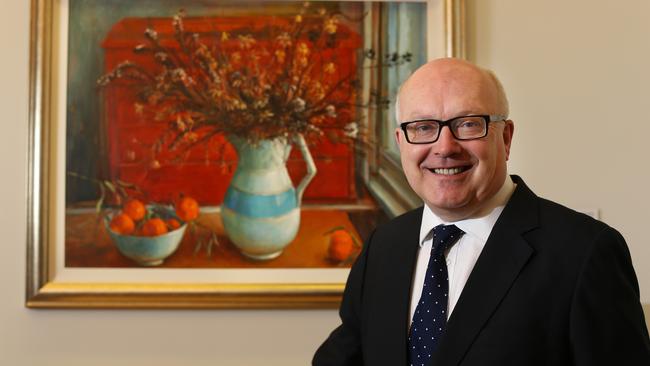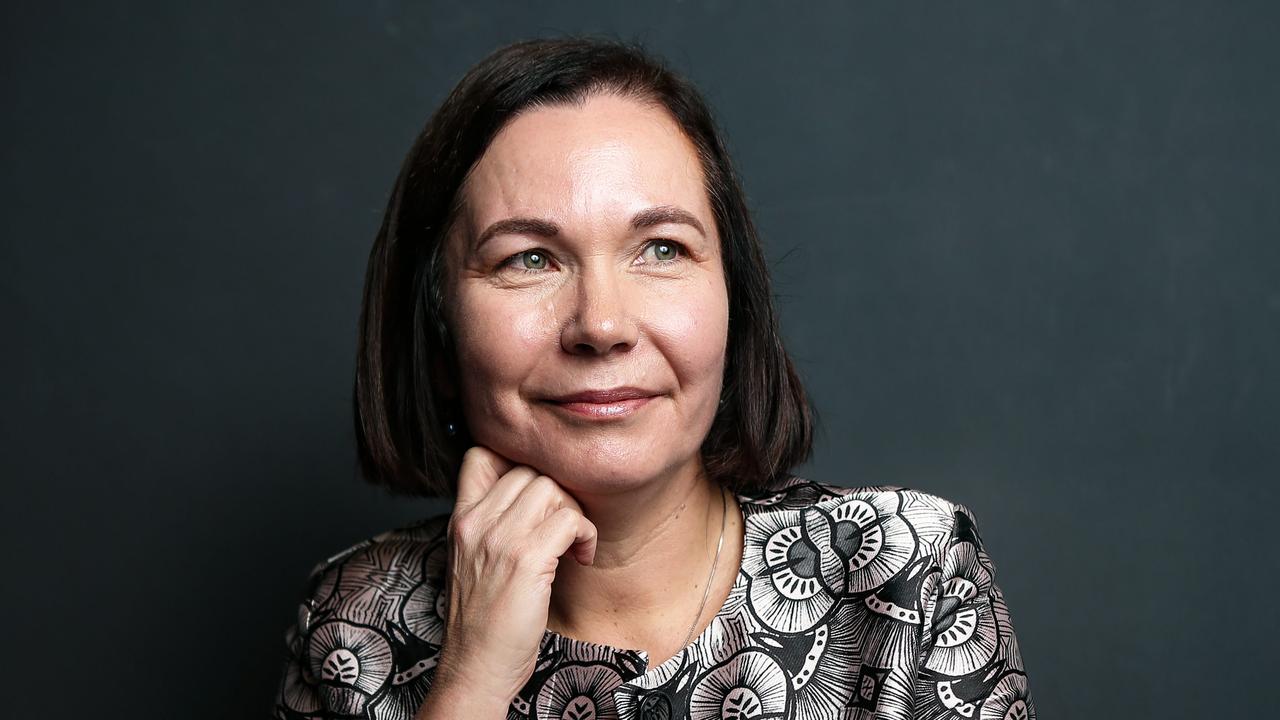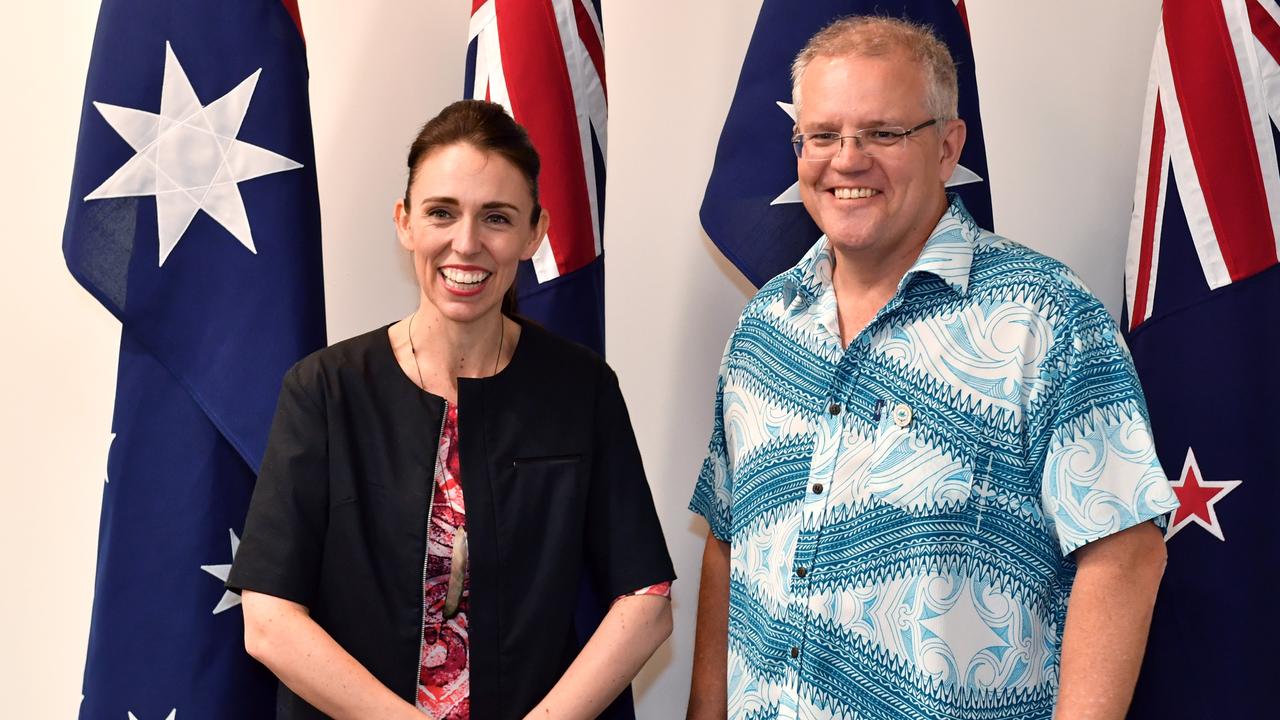A voice for the audience, not just artists
THE Arts Minister George Brandis wants to look after the many rather than the few.

AT a Sydney Opera House foyer party following the June 12 world premiere of Bangarra’s new show Patyegarang, the dance company's chairwoman Larissa Behrendt introduced Arts Minister George Brandis with unexpected warmth.
Amid outcry about social welfare cuts announced in the recent federal budget, the Sydney social justice lawyer praised the Queensland senator “for protecting Bangarra’s funding”.
Brandis couldn’t have scripted the introduction better himself. Behrendt, who will step down as Bangarra’s chairwoman in October, seemed to have tapped into a message the Arts Minister has been eager to spread.
In a wide-ranging interview with The Weekend Australian the next morning he expanded on that message. “At a time when the government was forced to introduce effectively what is an austerity budget, in which significant sacrifices were asked of almost every sector of the community, the arts did particularly well,” he said.
A million-dollar allocation for new Australian Ballet School premises received significant attention as did $2.8m funding for philanthropic and sponsorship matchmaker Creative Partnerships Australia but Brandis is eager to point out regional touring plus annual funding of about $100m for the Major Performing Arts Group of 28 companies, of which Bangarra is one, was entirely quarantined.
The Australian Major Performing Arts Group reports total turnover of about $500m a year and includes the state orchestras, capital city theatre companies, the Australian Ballet and Opera Australia all co-funded in fixed arrangements between the federal government and states.
Brandis, a familiar figure at the opera in both opposition and government, says the AMPAG companies are the major providers to Australian audiences.
“It’s been one of my constant themes in both my periods as Arts Minister that the one group of stakeholders always forgotten about in discussion of arts policy is the audiences or public who go to shows at galleries,” he says.
“They don’t have a voice unless it’s the Arts Minister because the Australia Council quite properly is concerned with the artists.
“Frankly I’m more interested in funding arts companies that cater to the great audiences that want to see quality drama, or music or dance, than I am in subsidising individual artists responsible only to themselves,” he says.
Brandis argues these audiences will not notice the “modest” $38m cut from Screen Australia’s budget and the Australia Council’s loss of $28.2m, both spread over the next four years, because the savings were made from underutilised programs.
And he makes no apologies for scrapping the previous government’s hastily assembled $8m Creative Young Stars program, part administered by Arts and the Education Department.
The scheme announced a year ago by former arts minister Simon Crean as part of the National Cultural Policy saw federal MPs distribute small grants to children and teenagers through their electoral offices just before the election.
“This was electoral baksheesh for marginal Labor party members of parliament dressed up as arts funding,” Brandis says.
All MPs could, in fact, access the biannual funding rounds but apathy for the scheme resulted in only the first round being distributed.
Where major performing arts companies and touring groups achieved security from the federal budget, the same cannot be said for the visual arts sector rocked in recent years by the end of superannuation collecting, the indigenous art code and introduction of a resale royalty scheme.
If the artworks on the Arts Minister’s walls are any indication, Brandis has traditional taste.
From Artbank and the parliamentary art collection he has chosen a painting by Brisbane artist Rick Everingham and what he describes as a “classic Margaret Olley with a blue jug”. He also has a glass plate by Canberra abstract artist Judi Elliott.
In his Brisbane office he confesses he hasn’t paid particular attention to office decor.
“I inherited Mr Rudd’s office with unspeakably ghastly prints provided by the department of finance and administration but because I’ve spent so little time (there) lately I haven’t had time to even get rid of (them),” he says.
Brandis had a brief dalliance as minister for arts and sport during the last months of the Howard government in 2007 where he ushered in a major restructure of the film industry.
He was reappointed Coalition arts spokesman in 2010 and retained the portfolio after the last election but the visual arts sector he returns to is considerably changed from the 2007 boom time.
The market has not recovered from the severe post-GFC contraction which, depending who you listen you, was made worse on account of the Resale Royalty scheme introduced in 2010 which distributes a 5 per cent fillip to the estates of artists upon all resales.
The same year art was declared an ineligible asset in self-managed superannuation funds by the Cooper review, resulting in the tax office slashing the value of art in super funds by 28 per cent last financial year.
All self-managed funds must be devoid of art by 2016 but there are calls to push this deadline out.
Where Brandis claims credit for protecting the blue-chip performing arts, he is more circumspect about accepting responsibility for uncertainty in visual arts.
A legislated review of the Resale Royalty scheme has not been formally responded to, a year after submissions were due, nor did the scheme receive funding in the budget leading to speculation it was being asphyxiated.
“All decisions of the budget are decisions of the budget,” the Arts Minister says.
“I’ve received the review and I’m examining it at the moment and you can expect an announcement in relation to that in coming months.”
The superannuation matter is more complex, it is a big deal for the art industry even though art accounts for just 0.1 per cent of SMSF assets.
There is a tradition of the arts minister representing the arts community to the finance minister responsible for carriage of the legislation.
“This is a matter of deep concern to me ... I think it’s a bad policy but it has an effect on the revenue and these decisions are not mine alone to make,” Brandis says, handing responsibility to Finance Minister and acting Assistant Treasurer Mathias Cormann.
In 2009 the Indigenous Australian Art Commercial Code of Conduct to stamp out carpetbagging was introduced with bipartisan support, operational funding and the expectation that by now it would have moved from voluntary to mandatory.
Code chairman Ron Merkel is pushing for this to happen, arguing the code’s effectiveness is undermined by it being voluntary.
Continued funding of $150,000 a year for the code was approved but Brandis has refused Merkel’s meeting requests, although the Melbourne QC recently met one of his advisers.
The Arts Minister will not reveal the outcome of that meeting. Merkel responds that the code has been put in cold storage because it doesn’t fit the Abbott government’s ideology.
Ideological or not, the lack of certainty adds weight to the impression that the arts is the minister’s second priority after his role as Attorney-General.
Brandis says the Arts Department is keeping abreast of demands placed on it. He says vacancies on the Movable Cultural Heritage Committee are about to be filled so that it has a quorum again.
He is less concerned about the absence of an advisory committee at the government’s art leasing company Artbank despite new chief executive Tony Stephens having not had a committee for longer than he has had one during 18 months in the job.
Artbank is also undergoing a move of its headquarters and substantial repurposing at this time.
Brandis says, “the chief executive can run Artbank perfectly well under the current arrangements but once again we are approaching the issue of appointments within the various arts agencies very carefully because we want to make sure we get the right people”.


